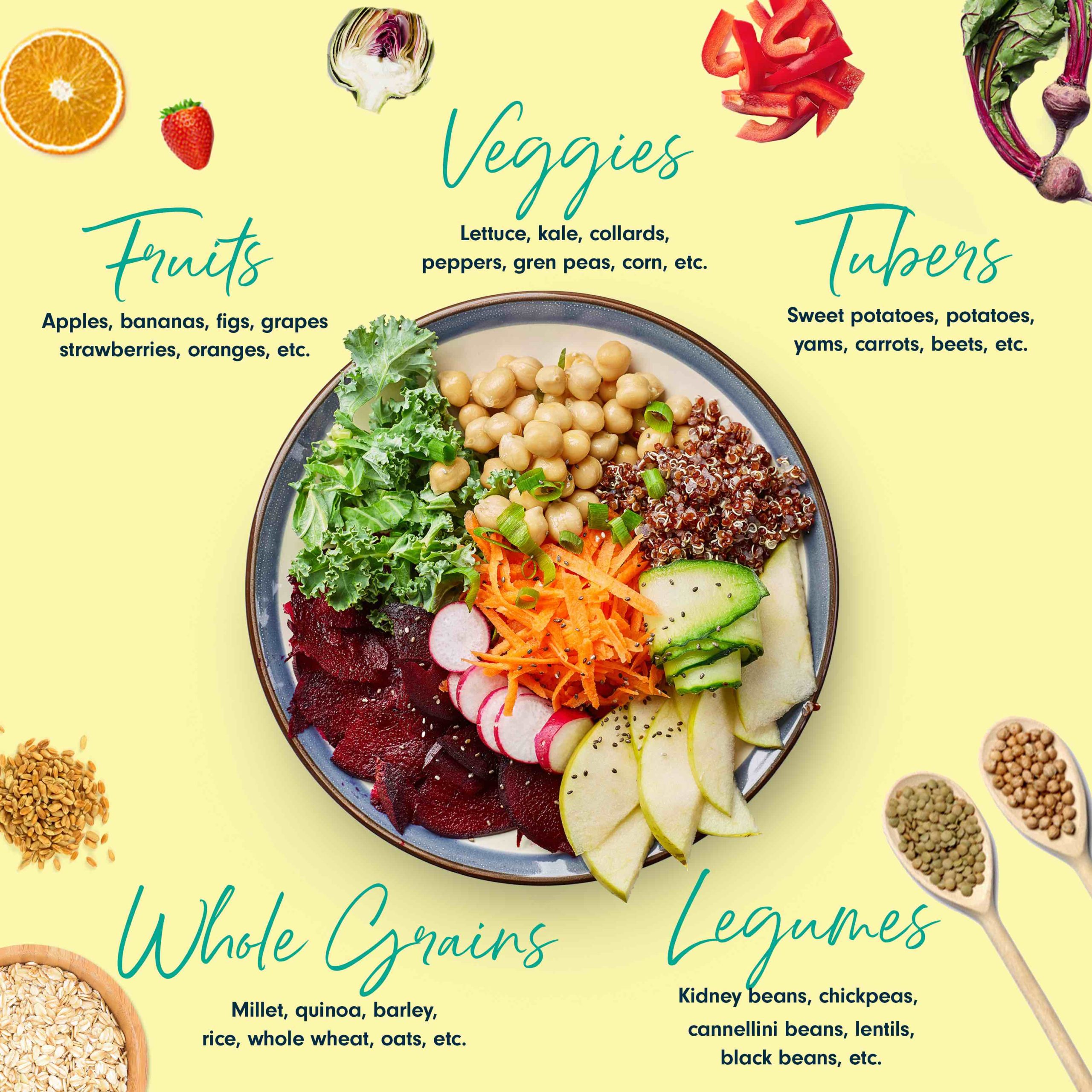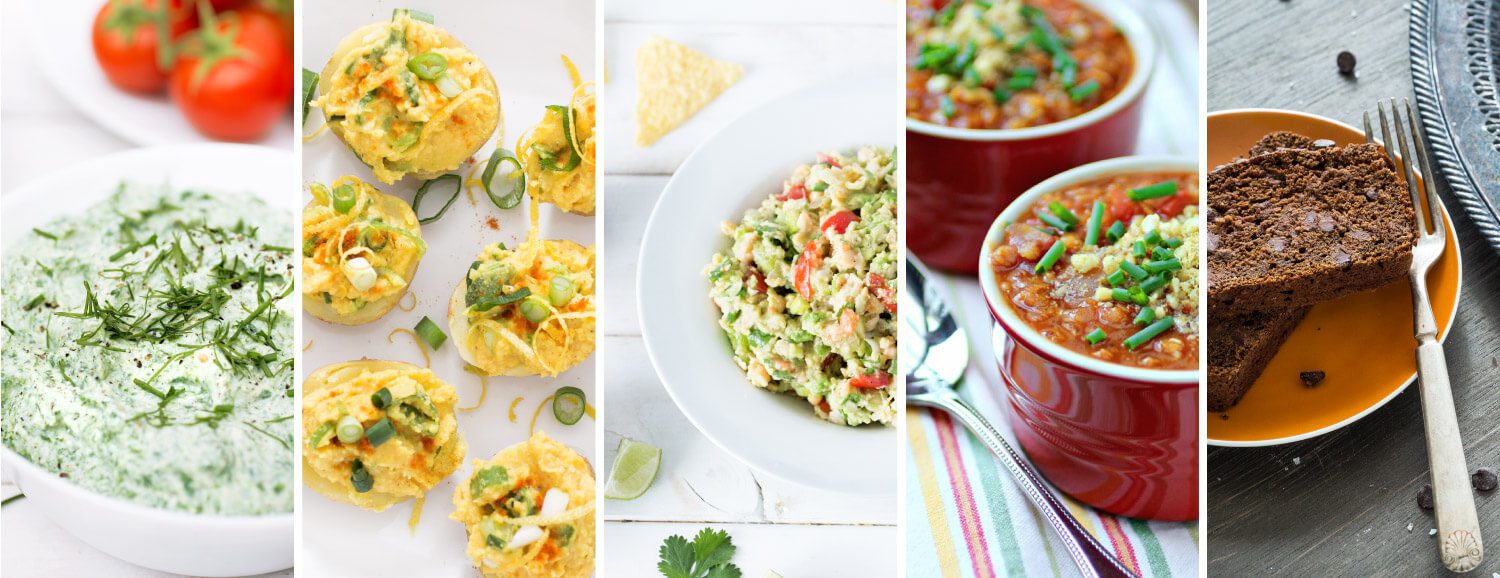
Plant-Based Primer: The Beginner's Guide to a Plant-Based Diet
One of the most powerful steps you can take to improve your health, boost energy levels, and prevent chronic diseases is to move to a plant-based diet. If you’ve seenForks Over Knives,you know that science shows changing your nutrition is a powerful way to live longer, help the environment, and reduce your risk of getting sick.
You’re probably thinking that moving to a plant-based diet sounds like a great idea, but you don’t know where to start. Don’t worry, you’re in the right place—we’ve got the tools, insight, and expertise to make the change easy and enjoyable. We’ll answer your questions, provide helpful advice, and share the techniques you need.
How a Whole-Food, Plant-Based Diet Can Boost Your Health
There’s excellent scientific evidence that many chronic diseases can be controlled, reduced, or even reversed by moving to a whole-food, plant-based diet. Scientific research highlighted in the landmark bookThe China Studyshows that a plant-based diet can reduce the risk of type 2 diabetes, heart disease, certain types of cancer, and other major illnesses. Many people also reportbigger fitness payoffs,more energy,reduced inflammation, andbetter health outcomesafter making the switch.
What is a Whole-Food, Plant-Based Diet?
A whole-food, plant-based diet is based on the following principles:
Whole fooddescribes natural foods that are not heavily processed. That means whole, unrefined, or minimally refined ingredients.
Plant-basedmeans food that comes from plants and doesn’t include animal ingredients such as meat, milk, eggs, or honey.
A whole-food, plant-based diet lets you meet your nutritional needs by focusing on natural, minimally-processed plant foods.

Your Whole-Food, Plant-Based Diet—The Foods You’ll Love
Here’s a quick overview of the major food categories you’ll enjoy on a plant-based diet, with examples:
Fruits:any type of fruit including apples, bananas, grapes, strawberries, citrus fruits, etc.
Vegetables:plenty of veggies including peppers, corn, avocados, lettuce, spinach, kale, peas, collards, etc.
Tubers: root vegetables like potatoes, carrots, parsnips, sweet potatoes, beets, etc.
Whole grains:grains, cereals, and other starches in their whole form, such as quinoa, brown rice, millet, whole wheat, oats, barley, etc. Even popcorn is a whole grain.
Legumes:beans of any kind, plus lentils, pulses, and similar ingredients.
There are plenty of other foods you can also enjoy— including nuts, seeds, tofu, tempeh, whole-grain flour and breads, and plant-based milks. However, we recommend eating these foods in moderation, because they are morecalorie-denseand can contribute to weight gain.
The Benefits of a Whole-Food, Plant-Based Diet
There are several major benefits to moving to plant-based nutrition, all supported by excellent science. These benefits include:
Easy weight management:People who eat a plant-based diet tend to be leaner than those who don’t, and the diet makes it easy to lose weight and keep it off—without counting calories.
Disease prevention: Whole-food, plant-based eating can prevent, halt, or even reverse chronic diseases, including heart disease, type 2 diabetes.
A lighter environmental footprint: A plant-based diet places much less stress on the environment.
Recipes to Make

Simple Plant-Based Recipes to Get You Started
We promised this would be easy! First of all, you can check out our entire archive ofwhole-food, plant-based diet recipes.Below are some of our favorites to get you started.
10 Plant-Based Snacks You Can Make in 5 Minutes
Fast, easy, delicious snacksfor kids and big kids.
30 Vegan Recipes That Are Totally Oil-Free
From buffalo cauliflower to no-fry fried rice, thesetasty recipesare seriously satisfying.
Fabulous Whole-Food Soups and Stews
Comfort in a bowl, from chili to minestrone and butternut squash to matzo ball.
Veggie-Centric Pasta and Noodle Dishes
From creamy classics to spicy delights, try thesehome-cooked wonders.
Hearty Plant-Based Wraps and Burgers
Filling and satisfyingsloppy joes, chickpea burgers, or a PLT.
Amazing Grains
Who could say no torice rolls, Spanish quinoa, or a Buddha bowl?
Home-Baked Goodness
Baked and stuffed recipesthat explode with fabulous flavor.
You can easily experiment with giving some of your own favorite recipes a plant-based makeover. Replace the meat in your favorite chili with beans or lentils, cook up some wonderful veggie burgers, or make vegetables the star attraction in that stir fry instead of chicken. For more delicious meal ideas,explore our recipe collectionordownload our mobile recipe app.
We Make Whole-Food, Plant-Based Cooking Easier
Once you have a taste for this nutritious and delicious plant-based diet, we’ve got the tools to take things to the next level. If you want to learn to cook whole-food, plant-based like a pro, ouronline cooking courseis a natural choice. If you’re looking for a way to make grocery shopping and meal preparation easier, check outForks Meal Planner. For healthy recipes in the palm of your hand, we’ve even got a mobilerecipe appso you’ll be inspired, wherever you are.
Would You Prefer a Gradual Change to Whole-Food, Plant-Based Eating?
We know that a sudden shift to plant-based eating isn’t for everyone. We asked one of our expert contributors, Craig McDougall, MD, for his advice: “Add around 1,000 calories of legumes, whole grains, and starchy vegetables to your everyday routine. These starchy foods keep you full and satisfied, so you’ll naturally eat less of the animal products and processed foods that are making you sick.” Dr. McDougall hasplenty of other great advice to share.
Forks Over Knives founder Brian Wendel has somegood tipstoo. He encourages people to “not sweat the small stuff” and to look at the big picture instead: “Focus on the big changes like switching from meat, milk, and eggs to whole plant foods. Such changes dramatically improve the nutritional composition of your diet, so this is where you will find the most noticeable and measurable improvements in your health.”
The time to start making the change is now. You’ll be glad you did.
Forks Over Knives Useful Resources and Reading
Forks Over Knives Tools and Books
Plant-based diet meal planner and grocery list
Plant-based diet cooking course
Plant-based diet recipe app
Plant-based diet books
Forks Over Knives Helpful Articles
5 Tips for Turning Healthy Behaviors Into Habits That Stick
Cooking for One: 5 Tips and 15 Recipes
Nutritionist’s List: Stock up on These Healthy Low-Cost Staples
22 Healthy Foods to Stock Your Fridge
These Three Kitchen Tips Will Change the Way You Cook
Your Plant-Based Questions, Answered
We’re sure you’ve got plenty of questions about the move to a whole-food, plant-based diet, and we’re here to help.
You don’t—until you try it! So many people who make the switch report feeling much better, having less fatigue, and losing weight, and otherwise enjoying a healthy lifestyle. We make the switch super easy with our extensive tools and resources.
Once you get started, it’ll be easier to keep going. As Dr. Craig McDougall says, “Once you have more energy, have lost some weight, or your stomach pain has disappeared, then it’s easier to continue eating healthfully. One of the best motivators for people transitioning to plant-based eating comes from how great they feel and how much more they can do in their lives once they’re feeling healthier.”
Whole-food, plant-based eating is cheaper than you think. Fresh produce goes a long way, and whole grains, potatoes, and beans are some of the most affordable bulk foods you can buy. Create meals around these staple items and you’ll definitely spend less than you do on a diet rich in meat and other animal products.
Useful Reads:
Nutritionist’s List: Healthy Low-Cost Staples
Strategies for Affordable Cooking and Eating
How I Ate Well on $5 a Day
You will need to plan ahead a little, but it’s pretty easy to find whole-food, plant-based meals on the go. You can usually find fruit and dishes made with pasta, rice, and potatoes wherever you are. With a little creativity and flexibility, you can also prepare some fantastic food to take with you.
Useful Reads:
Plant-Strong on the Road
7 Tips for Succeeding on a Plant-Based Diet
How to Eat Healthy in College
Most restaurants are very accommodating of dietary needs, and you should be able to review their menu online. Scan the menu in advance to see if a restaurant offers vegan options, and you’re already most of the way there. When you’re unsure, simply call ahead, explain your preferences, and they will probably be able to accommodate you.
Whole plant foods contain all the essential nutrients (with the exception ofvitamin B12) we need. You can get some B12 from fortified foods such as plant-based milks and breakfast cereals, but the best source is a simple B12 supplement. (In fact, the U.S. Department of Health and Human Services recommends supplemental B12 for all adults over age 50 because as we age, many people lose the ability to absorb vitamin B12 from food sources.)
Useful Reads:
Why Every Vegan and Vegetarian Needs Vitamin B12
Why You Don’t Need Dairy for Calcium
Do Vegans and Vegetarians Get Enough Protein?
7 Ways Milk and Dairy Products are Making You Sick
While there are certainly some similarities between eating a whole-food, plant-based diet and being vegan, there are some differences as well.
Vegansavoid all animal productsor exploitation in food, clothing, shoes, or any other aspect of their lives. Vegans do not necessarily focus on whole plant foods; they may eat refined and processed foods, although many choose not to.
By comparison,a whole-food, plant-based diet is defined as one thateliminates or minimizesall animal products and highly refined foods,including oil. That being said, FOK teaches the gold standard plant-based diet, which is completely free of animal products and therefore vegan.
